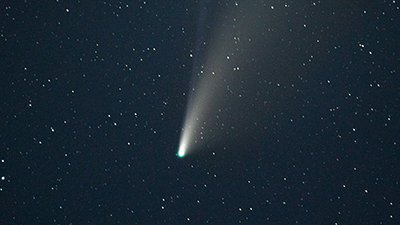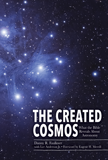Comet with Asteroid Build Discovered by NASA
At least one comet isn’t quite what astronomers expected, based on the results of NASA’s Stardust mission.
News Source
- National Geographic News: “Comet Built Like an Asteroid, Scientists Find”
The Stardust mission retrieved samples of the comet Wild 2 for NASA, bringing them back to earth in 2006. Studies of these samples are overturning previous thinking on what comets are and where they come from, National Geographic News explains.
“The first surprise was that we found inner solar system materials, and the second surprise was that we didn't find outer solar system materials.”
Although Wild 2 orbits like a comet, a chemical analysis by scientists indicates that the comet’s composition is asteroidal, resembling objects from the inner solar system’s famous asteroid belt rather than “pristine and ancient materials expected to be deep-frozen in the much more distant Kuiper Belt.”
“The first surprise was that we found inner solar system materials, and the second surprise was that we didn't find outer solar system materials,” explained study leader Hope Ishii, a physicist at the Lawrence Livermore National Laboratory.
Some astronomers believe this analysis confirms computer models that show “a major shake-up in the formation of the solar system that would have scattered materials far and wide—causing, for instance, inner solar system materials to reach the outer solar system.” Astronomers add that Wild 2 couldn’t have always been in the inner solar system, or it would have lost all of its dust and ice and not-so-melodramatically faded into oblivion.
Disappointed astronomers are pondering theories as to why Wild 2 contained none of the “pristine samples that predate the solar system,” which was part of the motivation for the Stardust mission (hence its name), as the team explained:
81P/Wild 2 has been widely anticipated to be a reservoir of presolar material, including stardust, cryogenically preserved since the accretion of the planets.
National Geographic News adds, “The researchers thought they would detect ancient stardust that collapsed to form our own sun and planets.” Ishii claims such ancient comets must exist because airplanes in the earth’s atmosphere have collected their dust.
Of course, the reason astronomers object to the idea that comets could be located within our solar system is their assumption about the age of the solar system (and, thus, the amount of time comets would have been exposed to sunlight). Viewing the solar system through a young-age lens makes the “problem” of the missing ancient comet dust disappear.
Further Reading
- The Tale of a Comet
- Get Answers: Age of the Earth, Astronomy
For More Information: Get Answers
Remember, if you see a news story that might merit some attention, let us know about it! (Note: if the story originates from the Associated Press, FOX News, MSNBC, the New York Times, or another major national media outlet, we will most likely have already heard about it.) And thanks to all of our readers who have submitted great news tips to us. If you didn’t catch all the latest News to Know, why not take a look to see what you’ve missed?
(Please note that links will take you directly to the source. Answers in Genesis is not responsible for content on the websites to which we refer. For more information, please see our Privacy Policy.)
Recommended Resources

Answers in Genesis is an apologetics ministry, dedicated to helping Christians defend their faith and proclaim the good news of Jesus Christ.
- Customer Service 800.778.3390
- © 2024 Answers in Genesis






